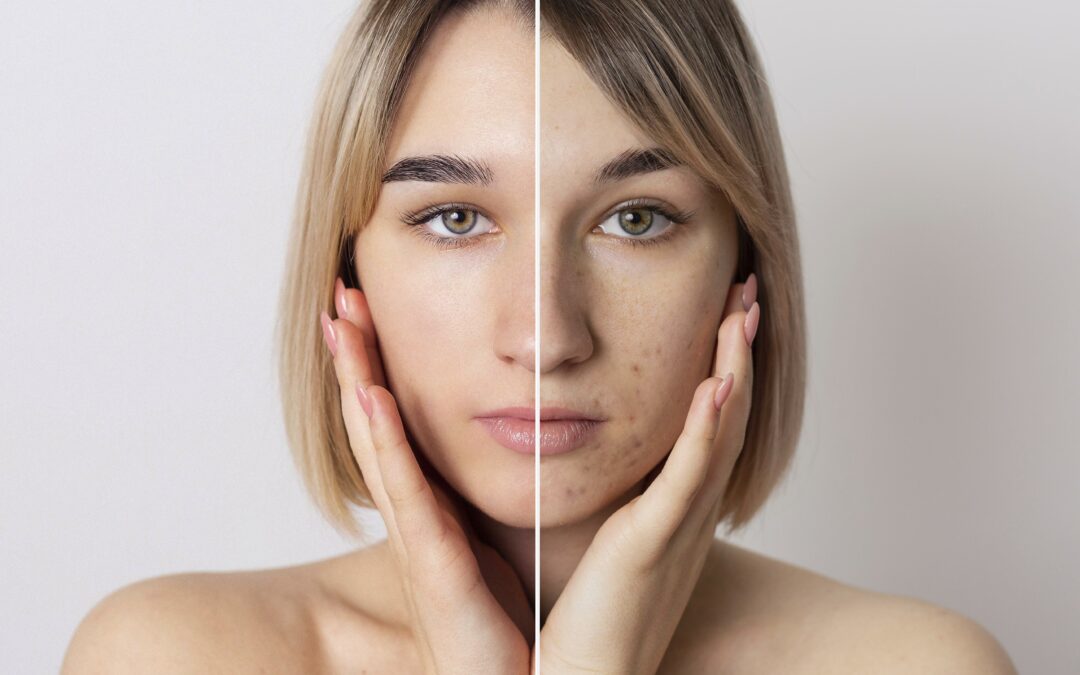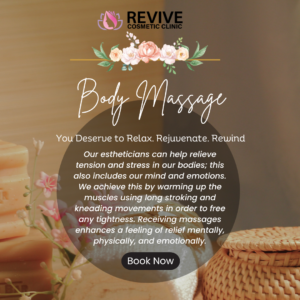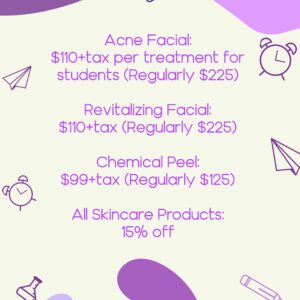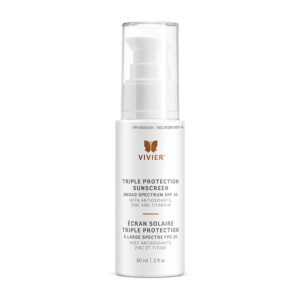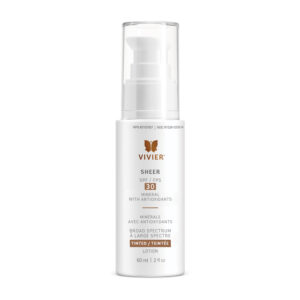Acne is a common skin condition that affects millions of people worldwide. While it can be challenging to deal with active acne breakouts, the aftermath can sometimes be just as troublesome: acne scars. These scars can take a toll on your self-esteem and confidence, making it essential to find the right acne scar treatment procedure to address your specific needs. In this comprehensive guide, we’ll explore various acne scar treatment options, how to choose the right one for you, and what to expect during the process.
Understanding Acne Scars
Before diving into the different acne scar treatment options, it’s crucial to understand the different types of acne scars and their characteristics. Acne scars can be broadly categorized into two main types:
- Atrophic Scars: These scars result from the loss of skin tissue during the healing process. They appear as depressions or pits in the skin and are often referred to as “icepick,” “boxcar,” or “rolling” scars. Atrophic scars are more common and typically require different treatment approaches than hypertrophic scars.
- Hypertrophic or Keloid Scars: Unlike atrophic scars, hypertrophic scars occur when there is an excess of collagen production during the healing process. They appear as raised, thickened areas of skin. Keloid scars are a specific type of hypertrophic scar that extends beyond the original acne lesion.
Topical Treatments
Now that you understand the basic types of acne scars, let’s explore the various treatment options available:
- Retinoids: Topical retinoid creams, such as tretinoin, can help improve skin texture and reduce the appearance of atrophic acne scars over time. They work by promoting skin cell turnover and collagen production.
- Topical Silicone Gel: Silicone gel sheets or creams can be applied to hypertrophic scars to flatten and soften them over time.
Chemical Peels
- Superficial Chemical Peels: These peels use mild acids, such as alpha hydroxy acids (AHAs) or beta hydroxy acids (BHAs), to exfoliate the top layer of skin. They can improve the appearance of mild acne scars and pigmentation issues.
- Medium to Deep Chemical Peels: For more severe scarring, medium to deep chemical peels containing trichloroacetic acid (TCA) or phenol can penetrate deeper into the skin to stimulate collagen production and reduce the appearance of scars.
Microdermabrasion
This non-invasive procedure involves exfoliating the outer layer of skin using a machine with abrasive crystals or a diamond-tipped wand. Microdermabrasion can help improve the texture of the skin and reduce the appearance of shallow acne scars.
Microneedling
Microneedling, also known as collagen induction therapy, uses tiny needles to create controlled micro-injuries in the skin. This stimulates collagen production and can help improve the appearance of atrophic acne scars.
Laser Therapy
Various types of lasers, such as fractional laser therapy and CO2 lasers, can target specific layers of the skin to stimulate collagen production and improve the appearance of acne scars. Laser therapy is effective for both atrophic and hypertrophic scars.
Dermal Fillers
Injectable dermal fillers, like hyaluronic acid or collagen, can be used to temporarily fill in atrophic acne scars, making them less noticeable. This is a quick and minimally invasive option for those looking for immediate results.
Surgical Procedures
For severe acne scars, surgical options such as punch excision, subcision, or skin grafting may be recommended by a dermatologist or plastic surgeon. These procedures involve physically removing or altering scar tissue.
Choosing the Right Acne Scar Treatment
Now that you’re aware of the various acne scar treatment options, how do you go about selecting the right one for your needs? Here are some factors to consider:
- Type of Acne Scars: Identify the type of scars you have. Atrophic scars may respond better to treatments like microneedling or laser therapy, while hypertrophic scars might benefit from silicone gel or surgical options.
- Severity of Scarring: Assess the severity of your acne scars. Mild scars may improve with topical treatments or superficial chemical peels, while more extensive scarring may require more aggressive approaches like deep chemical peels or laser therapy.
- Downtime: Consider your availability and willingness to undergo downtime. Some treatments, like deep chemical peels and laser therapy, may require several days to weeks of recovery time, while others, like topical treatments or microdermabrasion, have minimal downtime.
- Budget: Different treatments come with varying costs. It’s essential to determine your budget and discuss financing options with your healthcare provider if needed.
- Consult a Professional: Consultation with a dermatologist or a qualified skincare professional is crucial. They can assess your skin’s condition, discuss your goals, and recommend the most appropriate treatment plan tailored to your needs.
- Patient Reviews and Before-and-After Photos: Research patient reviews and view before-and-after photos of individuals who have undergone similar treatments. This can give you a better idea of the expected results.
- Long-Term Commitment: Understand that some treatments may require multiple sessions for optimal results. Consider your willingness to commit to the recommended treatment plan.
What to Expect During and After Treatment
The experience during and after an acne scar treatment can vary depending on the chosen procedure. However, here are some general expectations:
- During Treatment: Most treatments are performed in an outpatient setting. You may experience some discomfort, redness, and swelling during and immediately after the procedure. Local anesthesia or numbing creams are often used to minimize discomfort.
- After Treatment: Recovery time varies. For superficial treatments like microdermabrasion or mild chemical peels, there may be minimal downtime, with redness and peeling lasting a few days. Deeper treatments like laser therapy or deep chemical peels may require more extended downtime, with potential swelling and peeling lasting a week or more.
- Results: Results are not immediate and may take several weeks to months to become apparent. Collagen production and skin remodeling are gradual processes.
- Maintenance: Some treatments require maintenance sessions to sustain results over time. Your healthcare provider will discuss a recommended follow-up schedule.
- Sun Protection: It’s crucial to protect your skin from the sun to prevent further damage and maintain the results of your acne scar treatment. Regular use of sunscreen is essential.
Discover a New You with Revive Cosmetics
Dealing with acne scars can be a frustrating and challenging experience, but there are various effective treatment options available to address your specific needs. By understanding the types of acne scars, considering your unique circumstances, and consulting with a skincare professional, you can make an informed decision about the right acne scar treatment for you. Remember that patience and consistency are key as results may take time, but with the right approach, you can achieve smoother, more radiant skin and regain your confidence.
Are you ready to transform your skincare routine and rejuvenate your skin? Contact Revive Cosmetics today at (519) 749-5121 and take the first step towards achieving your skincare goals. Our team of experts is dedicated to helping you look and feel your best.

